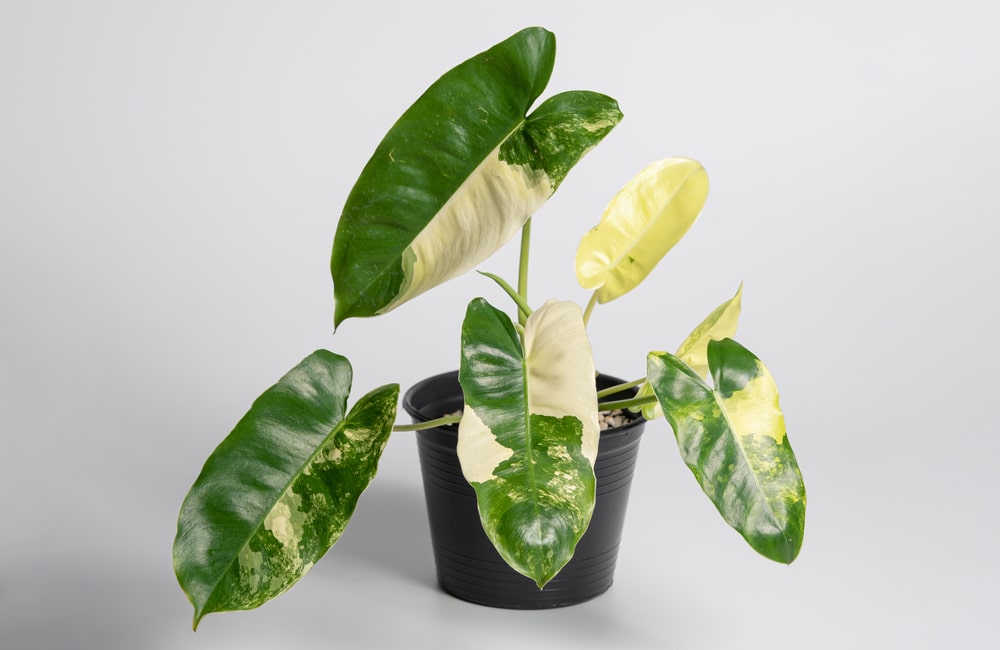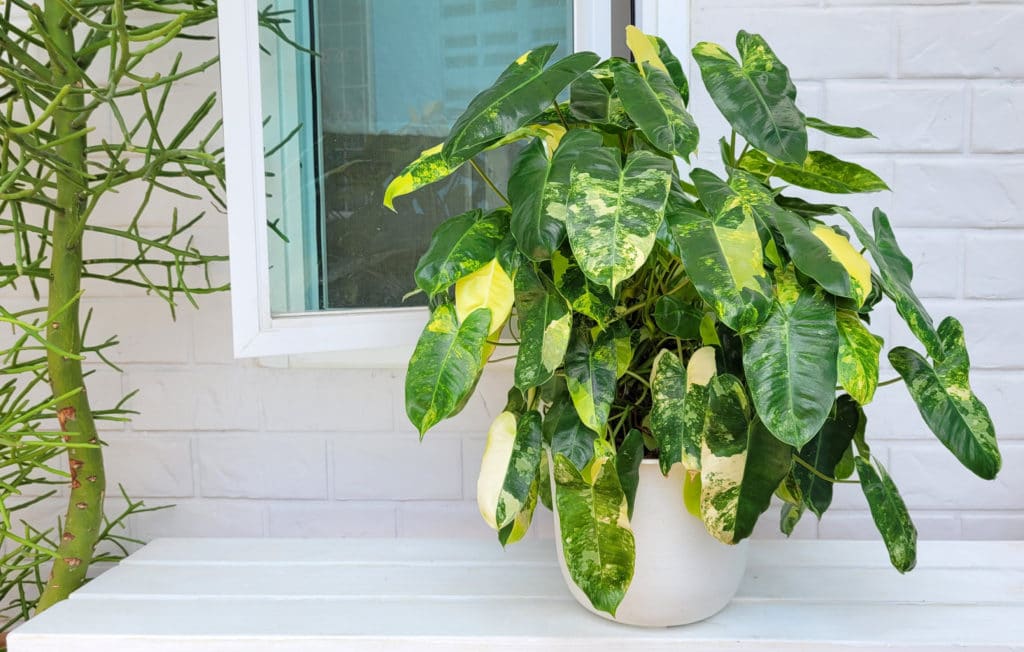Philodendron Burle Marx is a fast-growing tropical plant that’s very easy to care for. This tropical shrub originates from the rainforests of South America and is a popular houseplant worldwide. It’s straightforward to grow and care for and is the perfect plant for beginners who want to add some tropical vibes to their homes.
The Philodendron Burle Marx is a climbing plant that has some specific care requirements. It’s important not to neglect your plant. Let’s look at how to grow and care for a thrive Burle Marx plant.
What is a Philodendron Burle Marx
The philodendron Burle Marx is a member of the Araceae family. It was named after architect Roberto Burle Marx, who was noted as the first person to incorporate native plants into modern designs.
The Burle Marx plant is a low to the ground shrub with beautiful, dark, glossy, heart-shaped leaves. The stems are red or rusty colored. These plants have trailing vines and can be grown in a hanging basket with the stems trailing over the side. They also look great growing on a windowsill or shelf. In USDA zones 9 to 11, the Burle Marx plant can be grown outdoors.
Philodendron Burle Marx has been grown as a houseplant since the Victorian era. They are easy to care for, have a jungle look, and are great for purifying the air. These plants are a great choice if you’re looking for a smaller variety of philodendrons. The Burle Marx plant reaches 2 feet in height at maturity. When compared with other species in the Araceae family that grow to over 6 feet, this is relatively small. The plants can spread up to 4 feet, but regular pruning will help keep your plant the desired shape and size.
The downside of this plant species is that, like all philodendrons, they are toxic to humans and animals.
How to Care for a Philodendron Burle Marx
The philodendron Burle Marx is low maintenance. If you get the basics right, your plant will thrive. The species does have a preferred growing environment and some specific care needs. Follow these tips to grow a healthy specimen:
Sunlight Requirements
Philodendron Burle Marx plants need bright indirect sunlight to thrive. These plants may survive in lower light levels, but their growth is likely to be stunted, and leaves may look dull.
Be careful not to leave your plant in the full sun. Although the Burle Marx plant is a tropical species, they are part of the undergrowth and would have a canopy to provide shade and protection. Direct sunlight can burn philodendron leaves and leave brown marks on the foliage. In the worst cases, your plant may turn yellow and will eventually die.
Watering Needs
The Burle Marx plant needs to be regularly watered. It’s best to aim to keep the soil moist. Don’t drench the soil or leave it to dry out for weeks. Most people find that their plant needs to be watered once a week throughout the growing season. In the winter, watering can be reduced, and you can wait until the topsoil feels dry before watering your plant.
Be careful not to overwater your plant, or it will suffer from root rot. Root rot is a fungal infection that can kill plants. If your plants have been overwatered, you’ll need to act fast to revive it. Remove infected roots and repot using new soil. You can also treat the roots with a fungicide.
Soil type
Philodendron Burle Marx plants should be grown in well-drained soil to avoid root rot. A good-quality house plant soil can be mixed with perlite or peat moss to form the perfect mix. Alternatively, you can use tropical pre-mixed soil when repotting. Burle Marx plants require slightly acidic soil with a pH level of between 5.6 to 6.5.
Avoid using compressed soil or clay-like soils as these won’t provide adequate aeration and may become waterlogged.
Temperature
Burle Marx plants grow well at room temperature as they have acclimatized well. Your plant can be kept in temperatures of between 60 and 75F. They can cope with slightly lower temperatures at night but are sensitive to the cold and should be left in a draught or outside below 50F.
Humidity
As the Philodendron Burle Marx is a rainforest plant, it loves high humidity. Most Philodendrons need a lot of humidity. Luckily these plants can survive in drier environments as trying to recreate a jungle atmosphere in your home isn’t practical and will cause all sorts of problems. You do need to make an effort to provide some humidity. If the plant’s foliage dries out, they will die.
To keep your plant healthy, you can mist the leaves each morning using a bottle that produces a fine spray. Be careful not to soak the leaves, or they may start to rot. Alternatively, move your plant into the bathroom while you have a shower. The steam will provide your plant with humidity.
Fertilizer
You can fertilize your Burle Marx plant with either a liquid or slow-release fertilizer. Use a fertilizer that’s been specifically formulated for tropical plants and follow the instructions on the label when applying. Alternatively, use an all-purpose houseplant fertilizer at half the recommended strength.
You can feed your plant weekly throughout the growing season. It’s best to regularly fertilize your plant as they are fast-growing and require additional nutrients to thrive. Most people find that fertilizing once a month in the spring and summer is adequate.
Pests
The Philodendron Burle Marx plant is a reasonably pest-resistant plant. They can be affected by mealybugs, which are not harmful to humans. These bugs reproduce quickly and infest plants. These insects suck sap from plants’ leaves and can end up killing the plant.
If you notice any signs of insects, try using neem oil. You can also use an insecticide spray. Wipe each leaf carefully twice a week to get rid of pests. If you have any dead leaves, trim your Philodendron.
Conclusion
Burle Marx plants are lovely tropical plants that have become popular due to their heart-shaped, glossy leaves and red stems. They are smaller and more manageable than other types of philodendrons but can spread up to 4 feet. These plants should be kept in indirect sunlight, watered regularly, and misted daily to increase humidity. They also need to be grown in well-draining soil and fertilized monthly throughout the growing season.
Related Philodendrons:

